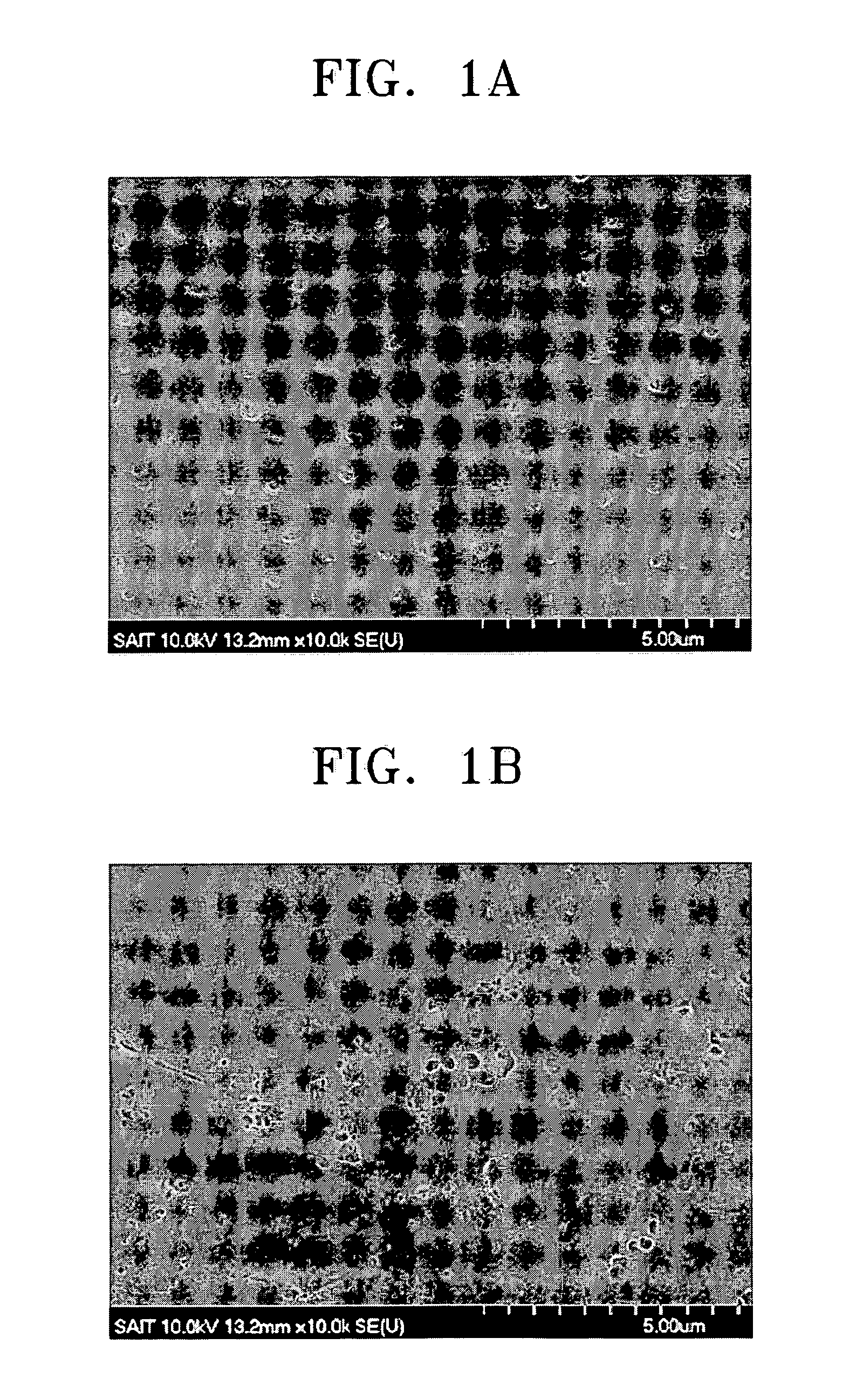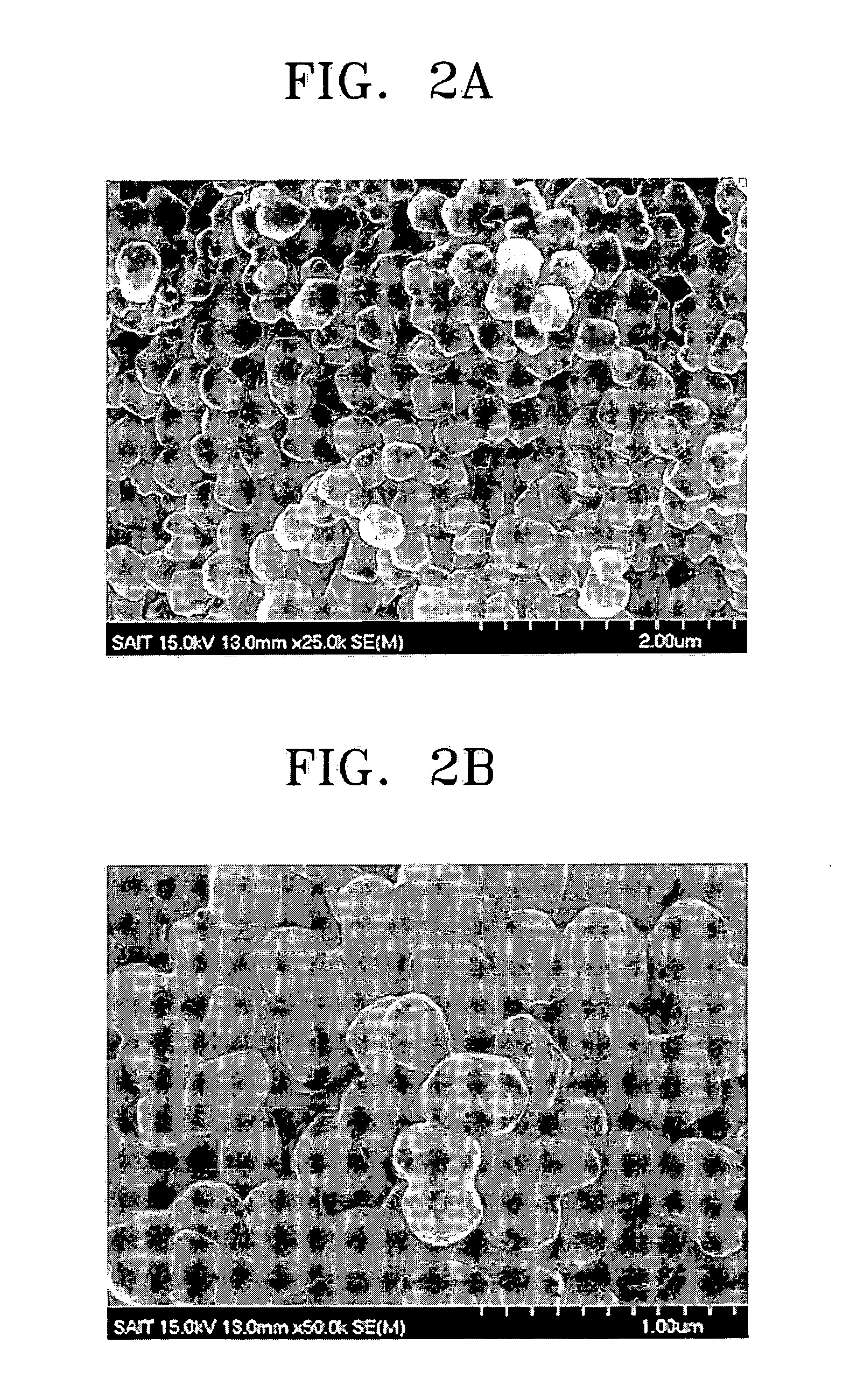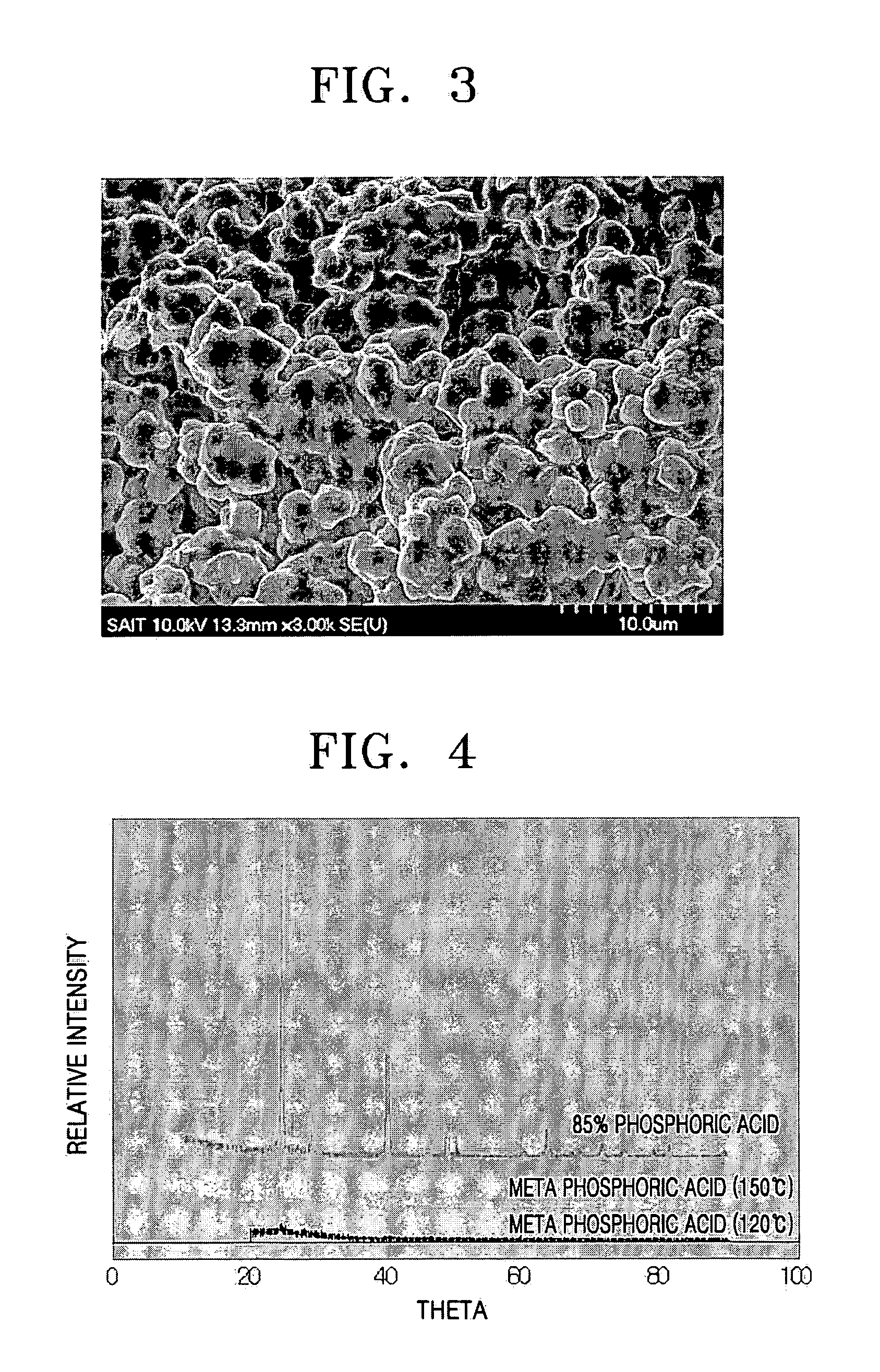Proton conductor and electrochemical device using the same
a technology of protons and conductors, applied in the field of protons, can solve the problems of non-uniform distribution of phosphoric acid used in the pbi-phosphoric acid system, affecting the efficiency of the operation at such temperatures, and affecting the efficiency of the operation
- Summary
- Abstract
- Description
- Claims
- Application Information
AI Technical Summary
Problems solved by technology
Method used
Image
Examples
example 1
[0073] 10 g of metaphosphoric acid ((HPO3)6) and 4 g of boric acid (H3BO3) were dissolved in 100 g of water. A TEFLON beaker was used because metaphosphoric acid is known to react with a PYREX glass vessel at high temperatures. A clear solution was obtained by completely dissolving the metaphosphoric acid and the boric acid in the water. The clear solution was thermally treated in a convection oven at 120° C. for 24 hours.
[0074] A clear amorphous sample was obtained as a result of the thermal treatment. The sample was cooled to room temperature and pulverized in a mortar. 0.3 g of the powder thus obtained was placed in a pellet jig. A pressure of 3,000 psia was applied to the jig for one minute to obtain pellets which were 1.3 cm in diameter and 1 mm thick. The pellets were inserted into a SUS electrode with a diameter of 1.5 cm and compressed to measure proton conductivity. The proton conductivity was 0.035 S / cm at 120° C.
example 2
[0075] A proton conductor was manufactured in the same manner as in Example 1 except that the thermal treatment temperature was at 150° C. The proton conductivity of the proton conductor was measured under the same conditions as in Example 1. The proton conductivity of the proton conductor was 0.022 S / cm at 120° C.
example 3
[0082] 10 g of metaphosphoric acid ((HPO3)6) and 4 g of boric acid (H3BO3) were dissolved in 100 g of water and 100 g of a Pt / C catalyst as a supported catalyst was added thereto. The reaction mixture was thermally treated in the same manner as in Example 1. 10 g of poly(vinyldifluoride) as a binder and 70 ml of N-methylpyrrolidone (NMP) were added to the resultant product and mixed to make a slurry. The slurry was coated on a surface of a water-proofed carbon cloth.
PUM
| Property | Measurement | Unit |
|---|---|---|
| temperature | aaaaa | aaaaa |
| temperature | aaaaa | aaaaa |
| temperatures | aaaaa | aaaaa |
Abstract
Description
Claims
Application Information
 Login to View More
Login to View More - R&D
- Intellectual Property
- Life Sciences
- Materials
- Tech Scout
- Unparalleled Data Quality
- Higher Quality Content
- 60% Fewer Hallucinations
Browse by: Latest US Patents, China's latest patents, Technical Efficacy Thesaurus, Application Domain, Technology Topic, Popular Technical Reports.
© 2025 PatSnap. All rights reserved.Legal|Privacy policy|Modern Slavery Act Transparency Statement|Sitemap|About US| Contact US: help@patsnap.com



